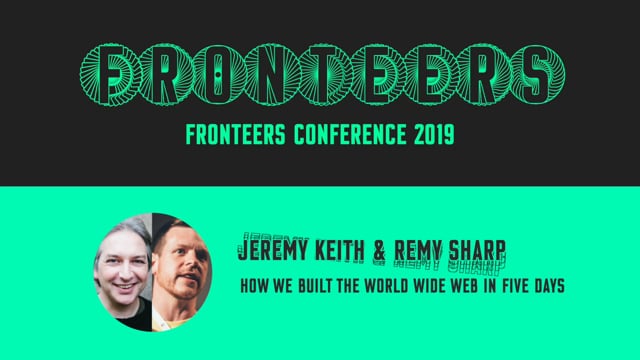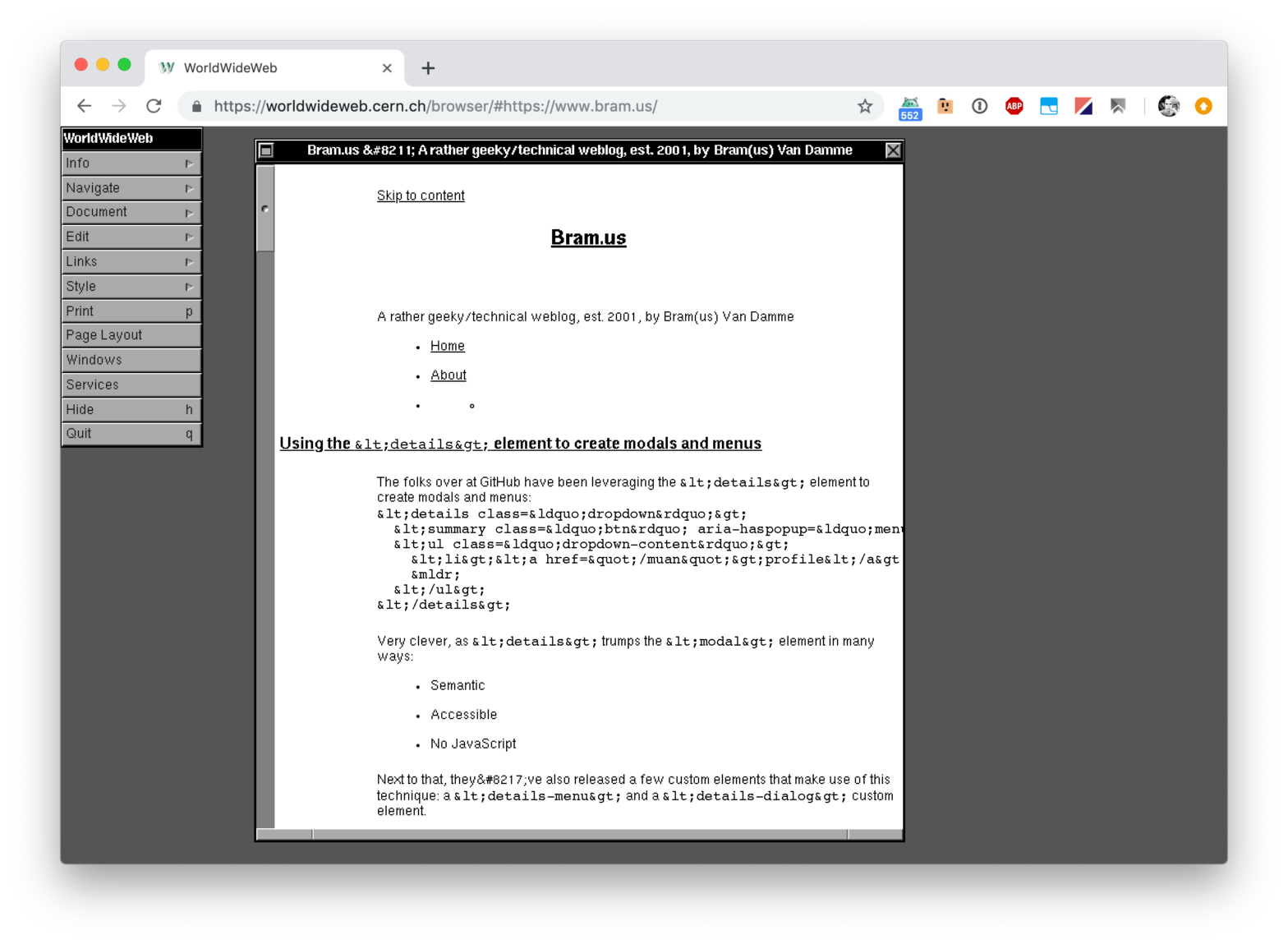
At the most recent edition of Fronteers Conference – a conference which I’ve been attending for over 10 yeras by now – Jeremy Keith & Remy Sharp did a two-person talk on their rebuild of the original WorldWideWeb application back in February. Join (Je)Remy on a journey through time and space and code as they …
Continue reading “How We Built the World Wide Web in Five Days”
